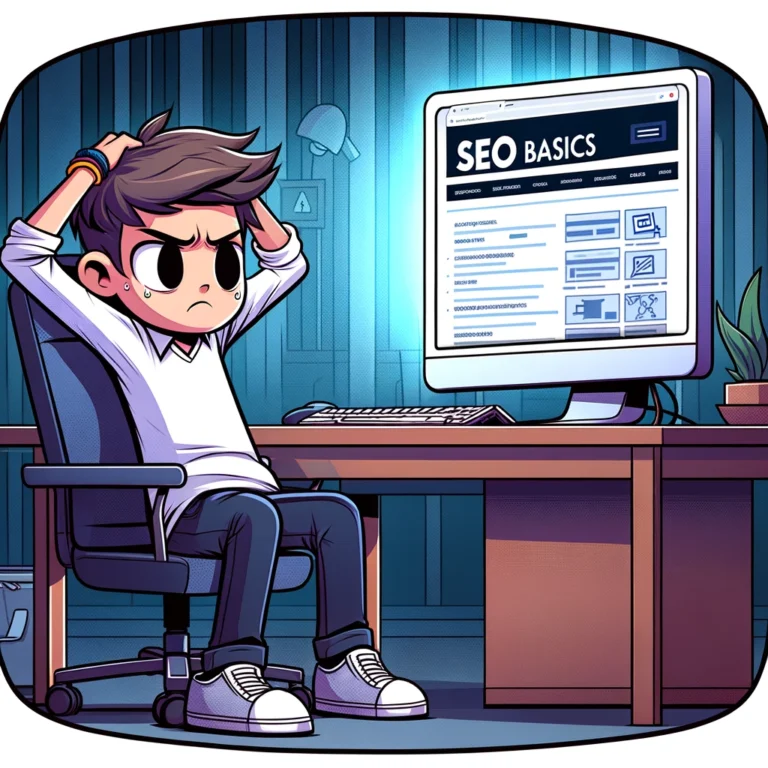In the expansive world of Search Engine Optimization (SEO), every little element of your website plays a crucial role in determining your visibility and ranking on search engines like Google. One such fundamental component is the sitemap. Sitemaps might not be the first thing that comes to mind when you think of SEO, but they are essential for both search engines and users. This article will explore the concept of sitemaps, why they are important, and how they can significantly impact your website’s SEO performance.
What is a Sitemap?
A sitemap is essentially a blueprint or map of your website that helps search engines find, crawl, and index all of your website’s content. Sitemaps can be in XML or HTML format, with XML sitemaps being more common and specifically designed for search engines. They list the URLs of a site along with additional metadata about each URL (such as when it was last updated, how often it changes, and its importance relative to other URLs on the site) which can help search engines crawl the site more intelligently.
Why Are Sitemaps Important for SEO?
- Improves Website Crawling:
Search engines use bots, known as crawlers or spiders, to collect information about your website. These crawlers begin with a list of web addresses from past crawls and sitemaps provided by website owners. Having an up-to-date sitemap makes it easier for crawlers to see what’s new or changed. This is especially crucial if your site has pages that aren’t well-linked to each other, or if you have a large archive of content pages that are isolated or not well linked. - Faster Indexation:
For new websites, a sitemap is a calling card that invites search engines to come and explore your content. Submitting your sitemap to search engine webmaster tools ensures that your site will be discovered and indexed by search engines faster than if you didn’t submit one. - Enhanced Visibility:
Sitemaps can also include metadata about each URL such as the type of content on each page, video and image information, or the publication date of a document. This information helps search engines to better understand your content and potentially rank it higher if it is deemed valuable to users. - Better Organization and Classification:
Beyond helping crawlers, sitemaps also benefit large websites by providing a structure and categorization of content. This is particularly beneficial for e-commerce sites, which may have a large number of products. It ensures that search engines can find all the products in your catalog.
Creating and Optimizing Your Sitemap
Creating a sitemap doesn’t have to be a complicated process. Here are some tips to create and optimize your sitemap:
- Use Sitemap Generators:
There are many tools available that can automatically create an XML sitemap for you. These tools generally crawl your website similar to how a search engine would and then generate a sitemap that matches your site’s structure. - Keep It Updated:
Ensure that your sitemap is always updated whenever new pages are added or old ones are deleted. Automating this process through your website’s backend or a plugin can help keep it seamless. - Prioritize Important Pages:
Not all pages on your website are of equal importance. Your sitemap should prioritize pages that have high-quality content and more significance in terms of SEO. This doesn’t mean excluding any pages but rather organizing your sitemap to highlight the most important ones first. - Submit Your Sitemap:
Once your sitemap is ready, submit it through Google Search Console and any other search engine webmaster tools you use. This submission notifies search engines of your sitemap’s existence or updates.
While sitemaps may seem like just another technical requirement, their role in SEO cannot be understated. They guide search engines through your website, ensuring that every page gets noticed and properly indexed. Whether you’re running a small blog or a large e-commerce platform, an optimized sitemap can significantly enhance your search engine visibility and improve your site’s overall SEO health.
Understanding and implementing a well-constructed sitemap can lead to better site rankings, more organic traffic, and improved site performance. It’s an essential component of your SEO strategy that helps bridge the gap between your content and search engine crawlers.

Optimizing Sitemaps for Different Types of Websites
Depending on the type of website you run, the approach to sitemaps can vary slightly, catering specifically to the nature of your content and how your audience interacts with it. Here are some specific considerations for different types of websites:
- E-commerce Sites:
For e-commerce websites, it is vital to include product pages, categories, and any pages that guide the user through purchasing decisions. It’s also beneficial to update your sitemap regularly due to the frequent changes in product listings and availability. - Blogs:
Bloggers should ensure their sitemap includes all post URLs and category pages. Since blogs are regularly updated with new posts, consider automating your sitemap to include new entries as they are published. - Corporate Sites:
For corporate websites, the sitemap should include all main navigation pages and any resources or service pages that enhance user engagement. These sites may not change often, but it is crucial to keep the sitemap current with any updates to services or new resource additions. - Portfolios:
If you run a portfolio site, your sitemap should showcase your work effectively by including all portfolio item pages and other key pages like your biography, contact information, and services.
Tools and Resources for Sitemap Management
Several tools and plugins can assist in the creation and management of sitemaps. Some of the most popular include:
- Google XML Sitemaps: This plugin for WordPress websites helps automate the creation and updating of sitemaps, making it easier for Google and other search engines to crawl your site.
- Screaming Frog SEO Spider: This tool is excellent for more comprehensive SEO audits, including sitemap generation. It’s particularly useful for large sites that require detailed crawls of their web pages.
- Yoast SEO: Another popular WordPress plugin, Yoast SEO, includes sitemap functionality. It allows for detailed configurations based on content type and can automatically inform search engines about updates to your content.
Common Sitemap Errors and How to Avoid Them
While sitemaps are generally beneficial for SEO, they can also lead to issues if not correctly implemented. Some common errors include:
- Outdated URLs: Ensure all URLs in your sitemap are current and lead to live web pages. Outdated or broken links can cause search engines to trust your sitemap less.
- Including Noindex Pages: If a page is marked as ‘noindex,’ it should not appear in your sitemap. Including these can confuse search engines and dilute the focus on your indexable content.
- Too Large Sitemaps: If your sitemap file is too large (Google limits a single XML sitemap to 50,000 URLs or 50MB uncompressed), it’s time to split it into smaller, categorized sitemaps. This makes it easier for search engines to process them.
Best Practices for Leveraging Sitemaps
To fully benefit from having a sitemap, consider these best practices:
- Keep It Clean: Regularly review your sitemap for any errors or unneeded entries and keep it as clean and precise as possible.
- Update Frequently: Especially for dynamic sites where content changes regularly, frequent updates are crucial to reflect the most current version of your website.
- Use Sitemap Index Files: If your website is very large, use a sitemap index file. This file acts like a sitemap of sitemaps, organizing multiple sitemap files under one index, making it easier for search engines to navigate.
Conclusion
Sitemaps are a critical, often overlooked component of SEO strategy. They not only help search engines crawl and index your site more effectively but also assist in organizing content for better visibility and navigation. Whether you’re a seasoned SEO expert or just starting, paying attention to your sitemap can provide significant benefits in your website’s search engine performance. With the right tools and practices, you can ensure that your site remains both accessible and engaging to users and search engines alike.
Understanding the nuances of how sitemaps work and optimizing them for your specific needs can make a substantial difference in your SEO efforts. Remember, a well-maintained sitemap is key to ensuring that all your valuable content is discovered and valued by search engines, paving the way for better visibility and success online.



